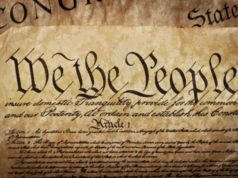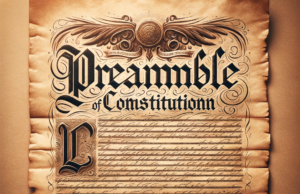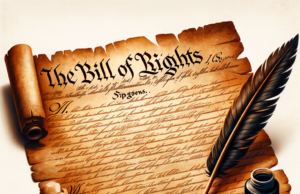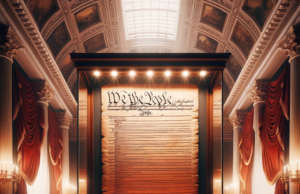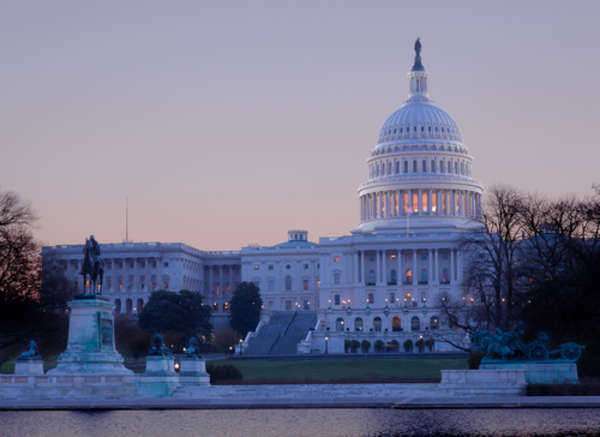Table of Contents

Ratification is a term that often comes up when discussing legal or international agreements. The concept of ratification can be difficult to understand, and it is essential to break down into simpler terms. In this article, we will define ratification and explore its various aspects.
Ratification is the act of giving formal approval or binding oneself to a legal or international agreement. When a treaty or an agreement is made between two or more countries, the agreement is not considered legally binding until it has been ratified. This means that the agreement must be accepted and approved by all parties involved, usually through a formal legal process.
Ratification is the final step in the process of creating an international agreement. Before an agreement can be ratified, it must be negotiated, drafted, and agreed upon by all parties involved. After the agreement has been signed, it is presented to each party for ratification.
The ratification process involves a series of legal steps that vary depending on the type of agreement. For treaties that affect international law, ratification requires the approval of a country’s parliament or executive branch. Other agreements, such as trade agreements, may require the approval of a country’s legislature or only a specific group of individuals.
During the ratification process, each party may have the opportunity to make changes or reservations to the agreement. Reservations are specific clauses or provisions of the agreement that a country disagrees with and decides not to adhere to. These reservations must be stated explicitly during the ratification process and are meant to protect a country’s interests.
Once all parties have ratified the agreement, it becomes legally binding and enforceable. If a country violates the terms of the agreement, the other parties may take legal action to enforce the agreement’s provisions.
Ratification is an essential aspect of international law and diplomacy. It allows countries to formalize agreements and establish mutual obligations. Without ratification, agreements would be little more than diplomatic agreements that lack legal weight.
The origins of ratification can be traced back to early forms of international agreements, such as the peace treaties that ended wars between ancient civilizations. Today, ratification is used to formalize a broad range of agreements, from political treaties to trade agreements to environmental treaties.
The ratification process can be lengthy and complex, requiring significant negotiation and legal expertise. However, the rewards of a ratified agreement are significant. Ratification helps to establish trust and cooperation between countries, leading to increased stability and economic cooperation.
In conclusion, ratification is the process of formally approving a legal or international agreement. During the ratification process, each party involved has the opportunity to approve, reject or modify the agreement as needed. Once all parties have ratified the agreement, it becomes legally binding and enforceable. The ratification process is critical to the establishment of international agreements and ensuring that they are legally enforceable.
_________________________________
The Supreme Court of the United States is the highest court of the federal judicial system. It has the power to interpret the Constitution and to determine the constitutionality of laws and actions taken by the government. The court consists of nine justices nominated by the President and confirmed by the Senate. Once appointed, a justice serves for life, unless they resign, retire, or are removed by impeachment.
The history of the Supreme Court dates back to the drafting of the Constitution. In Article III, Section 1, it is stated that “The judicial power of the United States shall be vested in one Supreme Court, and in such inferior courts as the Congress may from time to time ordain and establish.” However, it wasn’t until 1789, when the Judiciary Act was passed, that the Supreme Court was officially created and began hearing cases.
The Court’s earliest cases dealt with legal issues such as the jurisdiction of federal courts and the interpretation of the Constitution. In 1801, Chief Justice John Marshall was appointed, and his tenure is considered to be a turning point in the Court’s history. During this time, the Court asserted its power to strike down unconstitutional laws, establishing the principle of judicial review.
Since then, the Supreme Court has heard cases on many important issues, including civil rights, voting rights, privacy, and abortion. Some of the Court’s landmark decisions have included Brown v. Board of Education, which declared segregation in public schools to be unconstitutional; Roe v. Wade, which established a woman’s right to privacy in making decisions about her own body; and Obergefell v. Hodges, which legalized same-sex marriage nationwide.
Another important aspect of the Supreme Court is its role in interpreting the Constitution. The Constitution is a living document, and its interpretation evolves over time. Justices may interpret the Constitution based on original intent, or based on current societal values and norms. This can lead to different interpretations and disagreements among the justices.
The Supreme Court’s decisions have a huge impact on society, and the Court’s makeup and processes have come under scrutiny in recent years. One controversial issue is the nomination and confirmation process. Some criticize the political nature of the process, where nominees are often chosen for their ideological leanings rather than their qualifications. Additionally, some have raised concerns about the lack of diversity on the Court, both in terms of race and gender.
Despite these criticisms, the Supreme Court remains an important institution in the United States. The Court’s decisions shape the country’s laws and society, and its role as a check on the other branches of government is crucial to the functioning of American democracy.
The Supreme Court’s Makeup
The Supreme Court is made up of nine justices: one Chief Justice and eight Associate Justices. The President nominates justices, who are then confirmed by the Senate. The justices serve for life and can only be removed through impeachment.
The Chief Justice is the leading justice on the Court and has the power to assign cases to the other justices. The Chief Justice also presides over impeachment trials of the President, and is second in line to succeed the President, after the Vice President.
The current Chief Justice is John Roberts, who was appointed by President George W. Bush in 2005. The other justices are Clarence Thomas, Ruth Bader Ginsburg, Stephen Breyer, Samuel Alito, Sonia Sotomayor, Elena Kagan, Neil Gorsuch, and Brett Kavanaugh.
The Supreme Court’s Role
The Supreme Court’s main role is to interpret the Constitution and to determine the constitutionality of laws and actions taken by the government. The Court has the power to strike down laws that are deemed unconstitutional, and its decisions have a significant impact on society.
The Court also has the power to hear cases on appeal from lower courts, both federal and state. The cases the Court hears are typically those that involve important legal issues or that raise questions about the interpretation of the Constitution.
The Supreme Court also has the power to issue writs of certiorari, which are orders for lower courts to send the records of a case to the Supreme Court for review. The Court receives thousands of petitions for writs each year, but only a few are granted, typically between 100 and 150 cases per year.
The Supreme Court’s Decision-Making Process
When the Supreme Court hears a case, the justices hear oral arguments from both sides and then deliberate on the case. The decision-making process can take several months, and justices may change their positions and exchange opinions with each other before reaching a decision.
Once a decision has been reached, the Court issues a written opinion that explains the reasoning behind the decision. The opinion is typically authored by one justice, with other justices joining in support or dissenting.
The Court’s decisions are not always unanimous, and may be split between the justices. The Court may issue a plurality opinion, where a majority of the justices agree on the outcome but not on the reasoning, or a concurring opinion, where a justice agrees with the outcome but writes a separate opinion to express their own reasoning.
Supreme Court Justice Selection and Confirmation
The process for selecting and confirming Supreme Court justices has become increasingly political in recent years. The President is responsible for nominating justices, and the Senate must then confirm the nomination with a simple majority vote.
The President often nominates individuals who share their political ideology, and the Senate may take into account a nominee’s judicial philosophy and past decisions. This can lead to contentious confirmation processes, particularly for nominees who are seen as too conservative or too liberal.
Once a nominee is confirmed, they serve for life unless they resign, retire, or are removed through impeachment.
Supreme Court Transparency and Public Access
The Supreme Court’s decision-making process is often shrouded in secrecy, with oral arguments and deliberations held behind closed doors, and decisions often reached without public explanation. However, the Court has taken steps to increase transparency and improve public access in recent years.
Oral arguments are now broadcast live on C-SPAN and are available for later viewing on the Court’s website. The Court has also begun releasing audio recordings of the arguments shortly after they occur.
The Court’s opinions also provide insight into the justices’ reasoning and decision-making process, and are publicly available on the Court’s website. However, the process by which the justices arrive at their decisions remains largely opaque, with little insight into the deliberation process.
Supreme Court Diversity and Representation
The Supreme Court has historically lacked diversity in terms of race and gender. Only four women have served on the Court in its history, and only three have been people of color.
The lack of diversity on the Court has been a subject of controversy in recent years, with many calling for greater representation and diversity among the justices. Some argue that a more diverse Court would be better equipped to understand and address the concerns of different communities and perspectives.
Conclusion
The Supreme Court plays a crucial role in American democracy, interpreting the Constitution and determining the constitutionality of laws and actions taken by the government. Its decisions have a significant impact on society, shaping the country’s laws and values.
However, the Court’s makeup and processes have come under scrutiny in recent years. The political nature of the nomination and confirmation process, the lack of diversity among the justices, and the opaque decision-making process have all raised concerns about the Court’s legitimacy and effectiveness.
While the Supreme Court faces many challenges, its position as the highest court in the land remains an indispensable part of the American legal system. As long as it continues to uphold the principles of justice and fairness, it will remain a critical institution in the United States.
The core “check” applied to the Constitutional Amendment process provided by Article Five is the process of ratification. The key element of ratification is that it gives the states direct influence over the implementation of a Constitutional change or Amendment.
In every form of federal law, states have, at best an indirect means of influencing policy. Federal statutes are decided by Congress, whose members are elected on the State level, but while in office, operate without direct oversight over the State governments.
Federal administrative laws are proposed by agencies empowered by Congress, giving states even less influence over that process. Due to the overall importance of Constitutional Amendments, which are the laws by which all other laws in the country must answer to, the states are allowed to play a vital role in the ratification of these laws.
What ratification specifically is the means by which a proposed Amendment is legislated into being. It is similar to the President signing a bill into law or vetoing it, save that the Congress lacks the power to override a State rejection of an Amendment. Ratification works as such: when an Amendment (changes to the Constitution do not always have to take the form of an Amendment, which is a codicil to the document itself, but they have always taken this form) is proposed by either a two-thirds vote of both the Senate and the House of Representatives or a specially convened Constitutional Convention (which has never actually happened under Article Five), then it goes to the states for approval.
For an Amendment to be approved, or ratified, it must pass by a three-fourths vote in all individual State legislatures. By current standards, that means all but twelve states have to approve the Amendment. If it passes in the legislatures of three-fourths of all states, then it is ratified. If it does not, the proposal remains active for a seven-year period, during which legislatures are allowed to vote and re-vote for ratification if they so choose.
After this seven-year period, the Amendment is officially supposed to “die.” There have been instances where Congress has tried to extend the period for a bill, but the legitimacy of this practice has been questioned and has still yet to face judicial review.



